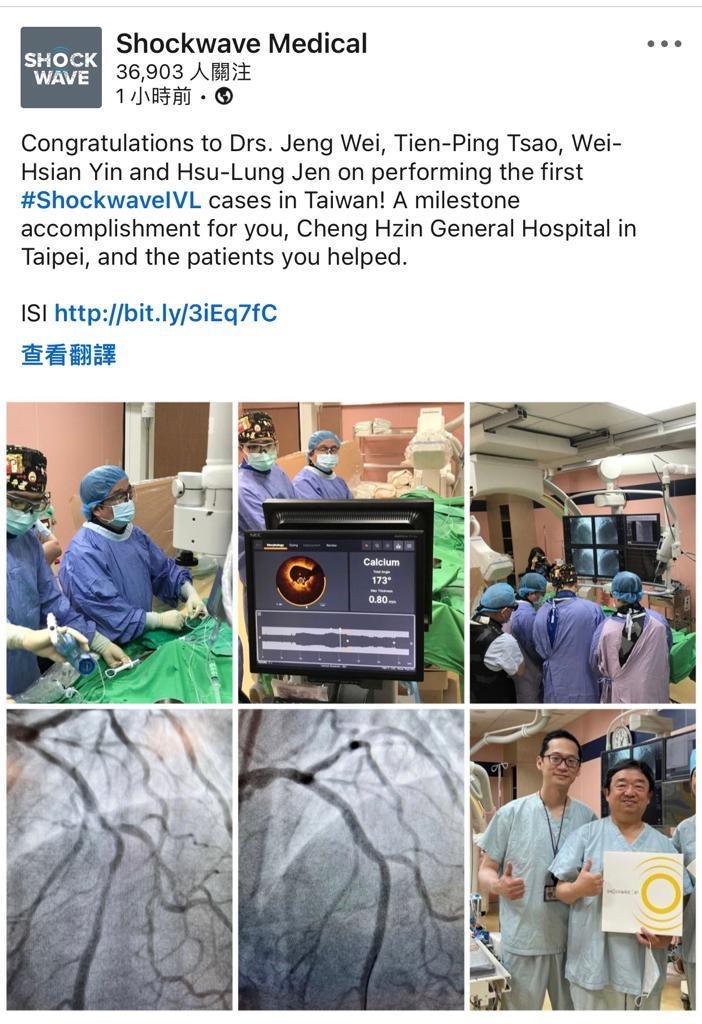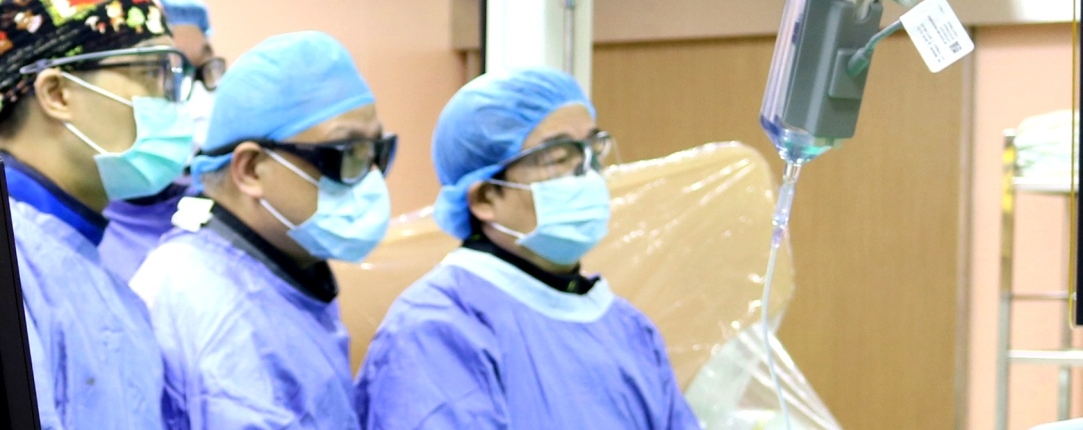Patients with heavily calcified coronary artery disease have undergone successful Intravascular Lithotripsy treatment at Cheng Hsin General Hospital
Percutaneous coronary intervention (PCI) with drug-eluting stent implantation is the most efficient mode of treatment for coronary artery disease. However, in severe vascular calcification cases, PCI of heavily calcified lesions may lead to complications caused by under-expansion and mal-apposition of stents, direct damage to the stent surface, or inefficient drug delivery.
To provide a safer and more sufficient way of treating severe vascular calcification, Superintendent of Cheng Hsin General Hospital, Professor Jeng Wei, was the first in Taiwan to introduce Intravascular Lithotripsy (IVL) system (Fig. 1).
IVL Technology in vascular calcification treatment uses approach similar to Extracorporeal Shockwave Lithotripsy (ESWL) for stones of urinary tract. By delivering sonic pressure waves with balloon before implanting the stent, it could “preferentially disrupt” vascular calcification and optimize the stent placement.
After cleared for the treatment of severely calcified coronary artery plaques by the FDA since 2021, IVL system has become one of the major approaches in treating vascular calcification lesions in the US. IVL system has also been proven to be able to optimize intervention results, prolong stent life-time, decrease operation risks, and improve patient prognosis.


Figure 1. The Shockwave intravascular lithotripsy system.






 Mon~ Fri 8am~5pm.
Mon~ Fri 8am~5pm.




